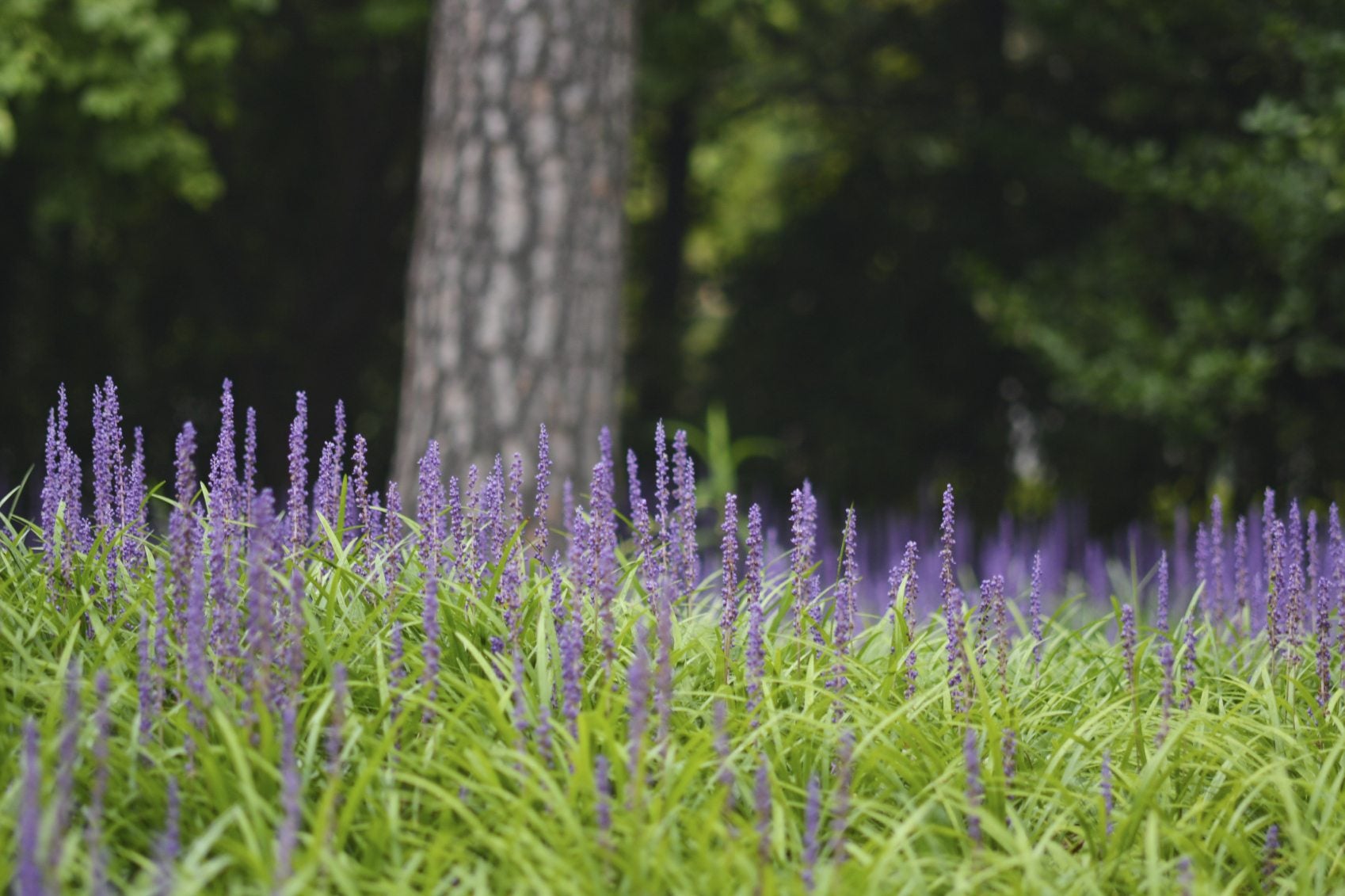Liriope Lawn Substitute - Tips For Growing Lilyturf Lawns


A beautifully manicured lawn sets off the rest of the landscape with its rich green tones and soft, velvety texture. However, getting and keeping that lawn perfect can be quite a chore. Turf grass requires mowing, fertilizing and watering to keep it at its peak appearance. An easier groundcover might be liriope as a lawn. Growing lilyturf lawns provides an easy care, low maintenance, vigorous source of turf that has year around appeal.
Using Liriope as Lawn
Liriope (commonly referred to as monkey grass) is a clumping to spreading plant that is sometimes called a border grass. It is useful in barricading regular turf grasses from garden. There are several species, any of which would be excellent groundcover or substitute for traditional turf grass. Liriope plants are adaptable to many types of growing conditions, which is another plus when using them for a lawn. Liriope lawn substitute multiplies rapidly and will quickly form a seamless green carpet. Liriope will grow in dry, sandy, clay, compact or nutrient dense soils. It is adaptable to both sunny and partially shady conditions. They are evergreen plants with excellent hardiness, growing between 11 and 18 inches (30-46 cm.) tall. You can mow them or leave them alone and they will remain small, compact plants. The clumping type forms a uniquely patterned lawn while the creeping variety forms a denser green expanse. Either variety is perfect as a liriope lawn substitute.
- Liriope muscari is the most common form of clumping lilyturf with many hybrids from which to choose.
- Liriope spicata is a creeping form that will establish through rhizome growth.
How to Grow a Liriope Lawn
Your work is half done for you if you have already removed the sod. Till the soil to a depth of at least 6 inches (15 cm.). Rake out the area to be planted and add a good topsoil layer of at least 3 inches (8 cm.). Liriope divides easily for more plants, or you can get flats of plugs from many nurseries. Cut apart larger plants, making sure to include some roots on each section. Most of the species get 12 to 18 inches (31-46 cm). wide at maturity, so plant them at this distance apart. One secret on how to grow a liriope lawn more quickly is to plant in fall or winter. This allows the plants to establish roots before their big burst of growth in spring and summer. Mulch around the plants and provide irrigation for the first year. Thereafter, the plants require infrequent watering.
Caring for Lilyturf Lawns
In addition to irrigation the first year, fertilize the plants with a good lawn food in early spring and mid-summer. Mow the plants in early winter one year after planting with your mower on the highest setting. Liriope does tend to get fungal issues, which can easily be controlled with a fungicide. Caring for lilyturf lawns is much easier than traditional turf grass. They don't need thatching, aerating, or consistent mowing or edging. Start the plants out right and they will reward you with a sea of green strappy leaves that give texture to the landscape.
Gardening tips, videos, info and more delivered right to your inbox!
Sign up for the Gardening Know How newsletter today and receive a free copy of our e-book "How to Grow Delicious Tomatoes".

Bonnie Grant is a professional landscaper with a Certification in Urban Gardening. She has been gardening and writing for 15 years. A former professional chef, she has a passion for edible landscaping.
-
 Get Ready For A Summer Of Hummers! Grow These Full Sun Hummingbird Plants and Flowers
Get Ready For A Summer Of Hummers! Grow These Full Sun Hummingbird Plants and FlowersIf you’re lucky enough to enjoy a sunny backyard, make sure you are maxing out on your pollinator opportunities and grow these full sun hummingbird plants and flowers
By Tonya Barnett
-
 12 Lush Alternatives To A Lawn For Sustainable Spaces
12 Lush Alternatives To A Lawn For Sustainable SpacesAlternatives to a lawn are beautiful and also beneficial to your local ecosystem and its pollinators. Explore our top picks for plants to replace grass.
By Tonya Barnett